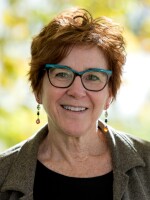This article first appeared in the St. Louis Beacon, March 13, 2012 - As a teaching artist in New York city schools, Nilaja Sun lost her heart — to the children. She hopes you will too, after seeing “No Child ...” playing at the Black Rep March 14 through April 1.
“No Child ...” is the story about a six-week experience in which a visiting teacher comes into a high school classroom to produce a play called “Our Country’s Good.” It also tells the stories of children and teachers in poorly performing schools everywhere.
Sun, who created the characters, including her namesake Miss Sun, as compilations of different people she’s met in her 14-year arts-education career, has starred in 700 presentations of “No Child ... .” She still travels around the world with her one-woman show.
Sun will appear at the Black Rep in a free event prior to the Thursday preview performance of “No Child ... .” But in the two-and-a-half-week local production, actor Patrese McClain will bring to life the 16 characters of Sun’s script, including Miss Sun and Miss Tam, and students Jerome, Shondrika, Jose, Chris, Brian, Coca and Phillip.
Sun’s acting resume includes such TV shows and movies as “The Bourne Legacy,” “Law and Order: Special Victims Unit” and “30 Rock.” You may remember her as the mail carrier in the February IKEA episode of “30 Rock” in which she whoops up on comedy-show writer character J.D. Lutz after he mistakes her for a hair salon customer.
In a conversation with the Beacon, Sun talked about a range of topics from her work with Tina Fey to the ideas behind “No Child ... .”
Beacon: How does “No Child ...” relate to the No Child Left Behind law?
Nilaja Sun: When I first wrote the piece, I really wanted what you call a sexy title, a title that kind of pops out. And I knew if I somehow alluded to No Child, the audience would know it has to do with education.
I named it “No Child ...” with the dot, dot, dot, not “No Child Left Behind” because otherwise, people might come in thinking it might be a piece complaining about the law of 2001.
In the end, the audience falls in love with the kids and the teachers and realizes how much work teachers have today. And hopefully they’ll be able to finish the phrase, “No Child ... “ with whatever it meant to them.
Would you describe one the kids the audience comes to love?
Sun: Jerome is the leader you find in the classroom. He’s the type of kid who, when you first walk into the classroom and you’re new there and you do not align yourself with him, he can make things super-duper-duper hard.
He’s the kind of kid who’s been left back, and he looks like an 18-year-old in a 25-year-old body. He was told at a very early age that he had to grow up, so he’s got a child inside of him.
In a way, he represents so many kids who are being left behind in our country. So, keep a close eye on him because, although he may seem disruptive, there’s definitely a reason why.
Is the play suitable for kids?
Sun: I think it’s suitable for kids who are maybe 12 and up. There is a lot of cursing because this is a particular high school where language is really an issue.
What do you hope the audience will take away from the play?
Sun: I hope they will really witness the power of the arts in our schools and the power of how important great teachers are in schools, and think back about the teachers who really influenced them in their lives. That’s one of the reasons I keep doing the show; so many teachers enjoy it, and they feel like they can breathe and cry and they feel “seen” in this show — so I keep doing it for them.
Changing the subject, what’s it like on the set of “30 Rock” — and will you do it again?
Sun: It’s like an absolute dream come true. I love Tina Fey — she’s one of my favorite idols. Everyone is such an improv actor so there’s no pressure; you can really do what you want and there’s a lot of inspiration that floats around. Everyone is super cool and nice — no big egos.
In my mind, I’ll do it again, but who knows? Just the fact that I was on it twice makes my life complete.

